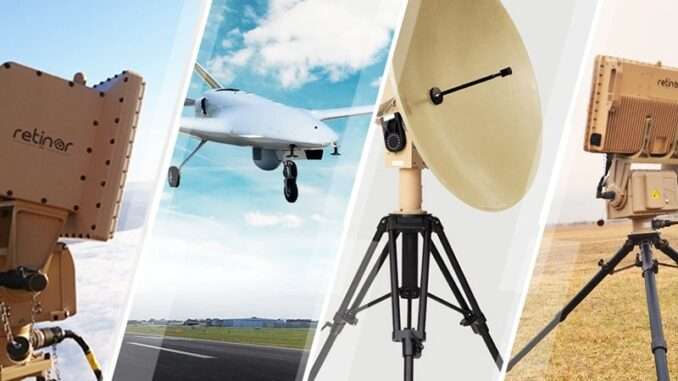
ödül öden
Asymmetric warfare, characterized by the significant disparity in the military capabilities of opposing forces, has become increasingly prevalent in the 21st century. This type of conflict often involves state actors fighting non-state entities, insurgents, or terrorists who use unconventional tactics to counter superior forces. The evolution of technology has transformed the nature of these confrontations, with electronic warfare (EW) and unmanned systems playing a pivotal role in shaping modern battlefields. This article explores the profound impact of EW and unmanned systems on today’s asymmetric warfare, emphasizing their strategic significance and potential for future military operations.
2.The Role of Electronic Warfare in Asymmetric Conflicts
Electronic warfare involves the use of electromagnetic spectrum technologies to disrupt, deceive, or degrade the enemy’s communication and radar systems. It encompasses three main components:
- Electronic Attack (EA): Actions to disrupt or destroy the enemy’s electronic systems.
- Electronic Protection (EP): Measures taken to defend against EW attacks.
- Electronic Support (ES): Activities aimed at detecting, intercepting, and identifying
signals for tactical advantage.
In asymmetric conflicts, EW has proven to be a force multiplier by neutralizing the enemy’s technological advantages. For instance, during the Russia-Ukraine conflict, EW has been extensively used to jam communication networks, mislead drone navigation systems, and gather intelligence on troop movements. This capability allows technologically superior forces to cripple the adversary’s coordination and effectiveness, ultimately shifting the balance of power in the battlefield.
3. Unmanned Systems in Modern Warfare
Unmanned systems, particularly drones, have revolutionized modern warfare by providing surveillance, reconnaissance, and precision strike capabilities without risking human lives. The primary types of unmanned systems include:
- Unmanned Aerial Vehicles (UAVs): Widely used for intelligence, surveillance, target acquisition, and strike missions.
- Unmanned Ground Vehicles (UGVs): Used for logistics, bomb disposal, and ground- based reconnaissance.
- Unmanned Maritime Systems (UMSs): Include unmanned surface vessels like ULAQ Unmanned Surface Vessel* and underwater drones for naval surveillance and mine detection. Unmanned systems have been at the forefront of recent conflicts in the Middle East, such as in Syria and Libya, where UAVs have played a crucial role in monitoring and attacking insurgent positions. These systems offer strategic advantages by operating in hostile environments without risking pilot casualties, providing real-time intelligence, and executing precise strikes against high- value targets.
4. Synergy Between Electronic Warfare and Unmanned Systems The integration of EW and unmanned systems has led to innovative military tactics that leverage the strengths of both technologies. Unmanned systems can be equipped with EW payloads to jam or intercept enemy communications, radar signals, and data links, thereby enhancing the effectiveness of electronic attacks. Conversely, EW techniques can be employed to protect unmanned vehicles from adversary detection and tracking systems. For example, the use of drones equipped with electronic jammers has proven effective in disrupting the operations of insurgent groups by interfering with their communication networks. The synergy between EW and unmanned technology enables precision strikes on enemy positions, significantly reducing their ability to coordinate and retaliate. This integration exemplifies a new era of warfare where technology plays a decisive role in achieving battlefield dominance.
5. Challenges and Limitations Despite their effectiveness, the deployment of EW and unmanned systems in asymmetric warfare presents several challenges. Technological hurdles such as signal interference, cyber vulnerabilities, and limited endurance of unmanned vehicles pose significant operational constraints. Additionally, adversaries are rapidly developing countermeasures, such as anti-drone systems and advanced jamming techniques, to mitigate the impact of these technologies.
Legal and ethical considerations also come into play when using these technologies, particularly regarding collateral damage, civilian casualties, and the autonomy of weaponized systems. The growing reliance on AI in unmanned systems raises concerns about accountability and decision- making in lethal operations, prompting calls for clear regulations and international agreements on their use.

6. Future Trends in Asymmetric Warfare
As technology continues to advance, the role of EW and unmanned systems in asymmetric warfare is expected to expand. Future developments will likely include the use of artificial intelligence (AI) to enhance the autonomy and decision-making capabilities of these systems, making them more adaptive and responsive to battlefield dynamics. Additionally, advancements in quantum computing and cyber warfare techniques will further augment the capabilities of EW, enabling more sophisticated attacks on enemy networks.
The increasing affordability and accessibility of drone technology also suggest that non-state actors will continue to adopt these systems in unconventional warfare, creating new challenges for military forces worldwide. The continued evolution of EW and unmanned systems will undoubtedly shape the strategies and tactics of future conflicts, emphasizing the need for innovation and adaptation in military operations.
7. Conclusion
Electronic warfare and unmanned systems have significantly impacted the landscape of modern asymmetric warfare. Their ability to disrupt enemy communications, gather intelligence, and conduct precision strikes has transformed military strategies and tactics on contemporary battlefields. As these technologies continue to evolve, their influence on warfare will only grow, making them indispensable tools in the arsenal of modern military forces. The future of asymmetric warfare lies in the ability to integrate advanced technologies into combat operations, ensuring strategic superiority and maintaining an edge over adversaries in an ever-changing global security environment.
This comprehensive examination highlights the importance of embracing technological advancements in electronic warfare and unmanned systems to stay ahead in the complex and unpredictable world of modern conflicts.



Be the first to comment